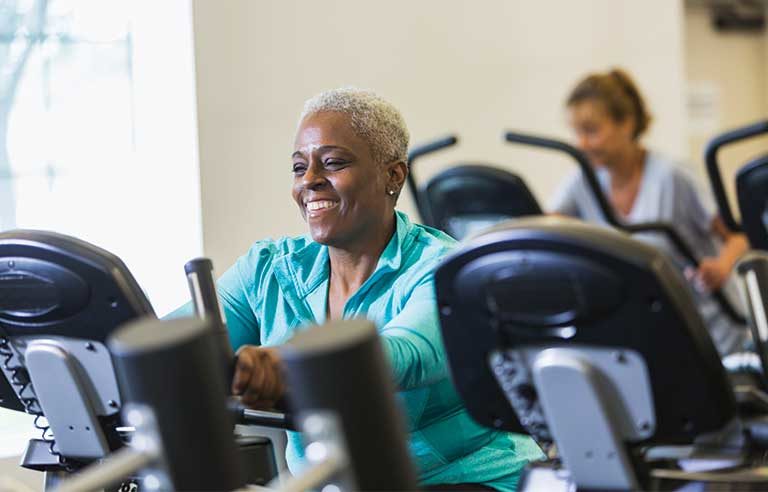Some older adults can see gains in cognition and memory after just one workout, study finds

Iowa City, IA — Older adults may be able improve their cognitive function and working memory with a single workout, but regular exercise is necessary to sustain the benefits, say researchers from the University of Iowa.
Their study involved 34 adults ranging in age from 60 to 80 who were healthy but not regularly active. Each participant rode a stationary bike for two 20-minute sessions – one with light resistance and the other more strenuous. They also underwent brain scans and completed a memory test before and after each session.
After a single session, some of the participants’ brain scans showed increased connectivity between “the medial temporal (which surrounds the brain’s memory center, the hippocampus) and the parietal cortex and prefrontal cortex, two regions involved in cognition and memory.” Those participants also had more success completing the memory test. This suggests that the acute effects of aerobic exercise may reflect initial cognition and memory changes that adapt over time, the researchers point out in an Aug. 23 press release.
Further, the participants also engaged in regular exercise, using a stationary bike for 50 minutes three times a week over a three-month period. Most showed mental benefits after the three months. However, these gains were no greater than when the participants exercised a single time.
“The benefits can be there a lot more quickly than people think,” study co-author Michelle Voss, an assistant professor in Iowa’s Department of Psychological and Brain Sciences, said in the release. “The hope is that a lot of people will then keep it up because those benefits to the brain are temporary. Understanding exactly how long the benefits last after a single session and why some benefit more than others are exciting directions for future research.”
The study was published online Aug. 2 in the journal Medicine & Science in Sports & Exercise.
